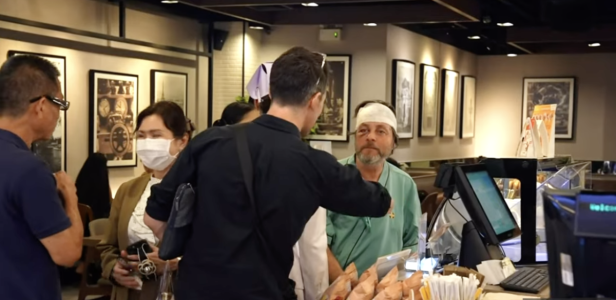Singapore Airlines apologises to injured Australian couple after flight turbulence
By
Seia Ibanez
- Replies 43
Travelling by air is often seen as a safe and efficient way to traverse the globe, especially for our seasoned travellers who have seen much of the world.
However, the skies can sometimes be unpredictable, and the recent ordeal faced by an Australian couple is a stark reminder of the potential perils of air travel.
The incident, which occurred on Tuesday, 21 May, in Singapore Airlines flight SQ321 from London to Singapore, left 20 people in intensive care, according to hospital officials.
The plane experienced a sudden drop 10 hours into the journey, causing injuries to passengers and crew members alike.

Among the injured, 22 patients suffered spinal cord injuries and six sustained brain and skull injuries. One passenger died of a suspected heart attack.
The oldest patient was 83 years old, and the youngest was a two-year-old child who suffered a concussion.
Adelaide man Keith Davis, who was among the 40 passengers and crew still receiving treatment in Bangkok, expressed his frustration at the lack of direct communication from the airline.
Davis mentioned that it could take several weeks before his wife Kerry, who sustained a spinal injury after being thrown into luggage compartments and landing in the aisle, is able to travel back home.
‘She fell flat straight into the aisle and from that moment, she didn't move,’ he said.
‘That's where she remained for the rest of the flight. It was really horrifying.’
Hospital staff at Samitivej Srinakarin Hospital intervened when Davis tried to speak with journalists about the lack of direct communication from airline representatives with him.
He said he ‘had no information, we’ve been left in limbo’ his attempts to speak to the media were quickly shut down by hospital staff.
The Director of Samitivej Srinakarin Hospital, Adinun Kittiratanapaibool, later apologised as they were only seeking to protect the privacy of patients.
‘The number of patients in ICU remain the same,’ Adinun Kittiratanapaibool said, referring to the hospital’s intensive care unit. ‘The meaning of those in ICU are those that need close attention.’
In response to the situation, Singapore Airlines CEO Goh Choon Phong personally visited the injured in Bangkok.
‘I have given [patients] my personal assurance that we will take care of them during this difficult time,’ he said.
The airline issued an apology to the Australian couple and arranged for family members to join them in Bangkok, where they were receiving medical care.
‘Singapore Airlines apologises to Mr Keith Davis and his wife, and is providing them with the necessary support and assistance they need during this difficult time,’ the airline said.
You can watch Keith Davis’ interview with ABC below:
Credit: ABC News Australia / YouTube
 We extend our thoughts to the Davis couple and all those affected by this incident.
We extend our thoughts to the Davis couple and all those affected by this incident.
However, the skies can sometimes be unpredictable, and the recent ordeal faced by an Australian couple is a stark reminder of the potential perils of air travel.
The incident, which occurred on Tuesday, 21 May, in Singapore Airlines flight SQ321 from London to Singapore, left 20 people in intensive care, according to hospital officials.
The plane experienced a sudden drop 10 hours into the journey, causing injuries to passengers and crew members alike.

Singapore Airlines apologised to an Australian couple after flight turbulence. Credit: ABC News Australia / YouTube
Among the injured, 22 patients suffered spinal cord injuries and six sustained brain and skull injuries. One passenger died of a suspected heart attack.
The oldest patient was 83 years old, and the youngest was a two-year-old child who suffered a concussion.
Adelaide man Keith Davis, who was among the 40 passengers and crew still receiving treatment in Bangkok, expressed his frustration at the lack of direct communication from the airline.
Davis mentioned that it could take several weeks before his wife Kerry, who sustained a spinal injury after being thrown into luggage compartments and landing in the aisle, is able to travel back home.
‘She fell flat straight into the aisle and from that moment, she didn't move,’ he said.
‘That's where she remained for the rest of the flight. It was really horrifying.’
Hospital staff at Samitivej Srinakarin Hospital intervened when Davis tried to speak with journalists about the lack of direct communication from airline representatives with him.
He said he ‘had no information, we’ve been left in limbo’ his attempts to speak to the media were quickly shut down by hospital staff.
The Director of Samitivej Srinakarin Hospital, Adinun Kittiratanapaibool, later apologised as they were only seeking to protect the privacy of patients.
‘The number of patients in ICU remain the same,’ Adinun Kittiratanapaibool said, referring to the hospital’s intensive care unit. ‘The meaning of those in ICU are those that need close attention.’
In response to the situation, Singapore Airlines CEO Goh Choon Phong personally visited the injured in Bangkok.
‘I have given [patients] my personal assurance that we will take care of them during this difficult time,’ he said.
The airline issued an apology to the Australian couple and arranged for family members to join them in Bangkok, where they were receiving medical care.
‘Singapore Airlines apologises to Mr Keith Davis and his wife, and is providing them with the necessary support and assistance they need during this difficult time,’ the airline said.
You can watch Keith Davis’ interview with ABC below:
Credit: ABC News Australia / YouTube
Key Takeaways
- Singapore Airlines has issued an apology to an Australian couple injured during severe turbulence and is assisting with support and arrangements for family travel.
- The airline's CEO, Goh Choon Phong, visited the injured passengers in Bangkok personally, assuring them of the airline's care during this difficult period.
- Twenty people who were aboard the flight remain in intensive care, with Adelaide man Keith Davis and several others still receiving treatment in Bangkok hospitals.
- Despite initial communication issues, the airline has responded with apologies and support as families and the injured navigate the aftermath of the turbulence incident, which caused multiple injuries and one fatality.







